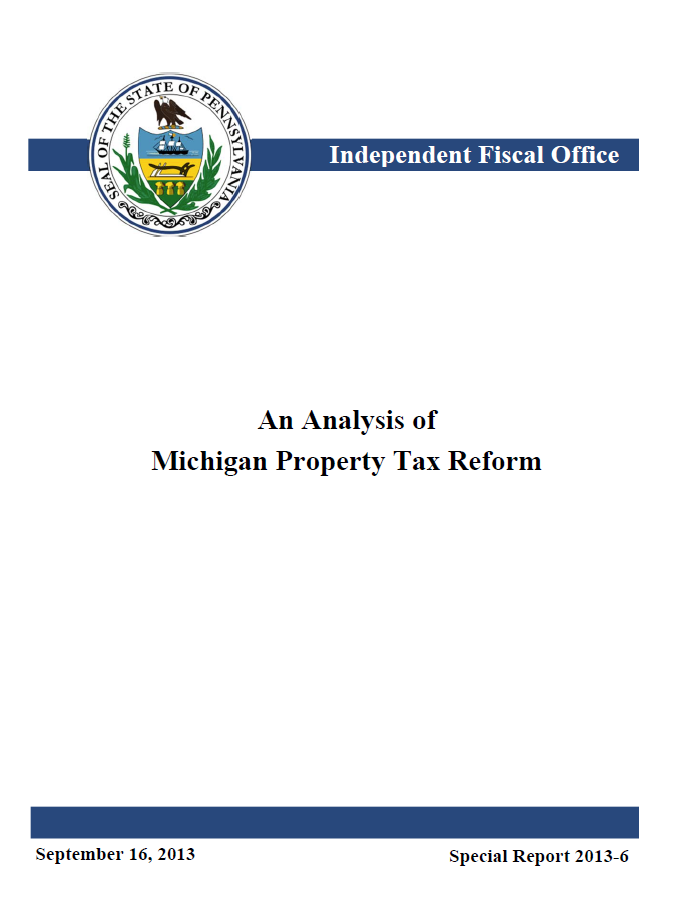Analysis of Michigan Property Tax Reform
September 16, 2013 | Property Tax

This brief analysis describes the tax and funding changes implemented by Proposal A. The analysis uses data published by various Michigan executive and legislative agencies to quantify the impact of property tax reform on tax revenues, millage rates, per pupil funding levels and the property tax base. To assist policymakers in their deliberations of property tax reform proposals for Pennsylvania, the analysis examines historical data to illustrate the impact that property tax reform had on Michigan over the past two decades. It is noted that potential outcomes for Pennsylvania could be very different than Michigan because proposed reforms are not identical to those implemented under Proposal A. Moreover, due to the contraction of the auto industry, Michigan economic activity was significantly weaker than the rest of the country, or what might be expected under “normal” conditions. From 2003 to 2012, Michigan real gross state product (GSP) contracted at an average rate of 0.9 percent per annum. By comparison, Pennsylvania real GSP expanded at an average rate of 0.9 percent per annum during that time period.
This brief report proceeds as follows. The first section provides background on the tax and funding changes implemented by Proposal A. The second section discusses historical revenue trends for the Michigan School Aid Fund. That fund uses earmarked revenues to make per pupil foundation allowance grants to local school districts. The third section presents per pupil revenue and foundation allowance trends. The fourth section discusses the impact of Proposal A on statewide average millage rates and the growth in millages levied for debt purposes. The fifth section discusses the impact of tax reform on the Michigan property tax base. A brief summary concludes the analysis.